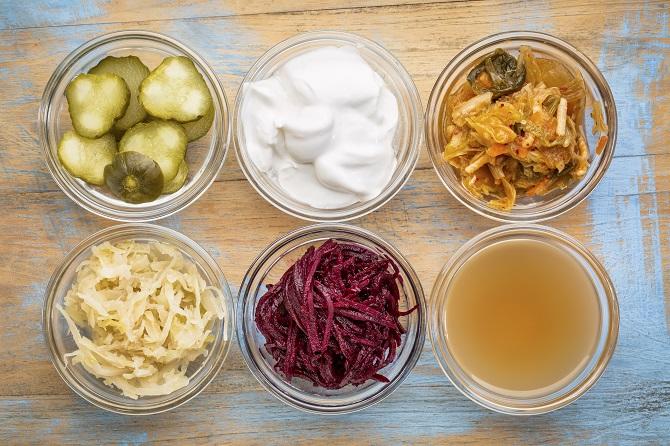The World Health Organization defines probiotics as “live microorganisms which when administered in adequate amounts confer a health benefit on the host”.
There is a constant battle between the good bacteria and the bad bacteria in our gut. A good balance of the two is crucial for optimal health. Consuming probiotics is a way of giving a leg up to the good bugs in this survival game, so they constantly are the predominant population.
So how can we ensure that our body has an ongoing access to probiotics. This can be done in one of two ways – Diet and/or Supplements.
Probiotic rich foods: Fermented foods contain probiotics in their natural form and so are really the best sources. These foods have the added advantage of packing in other nutrient benefits as well.
Examples of such foods are yogurt, kefir, sauerkraut, kimchi, miso, tempeh, pickles and beverages like kombucha.
Indian foods , especially the South Indian diet of idlis and dosas are especially rich in probiotics. As South Indian, I grew up consuming these delicious delicacies!
Probiotic Supplements: The typical American diet is devoid of fermented foods – with the exception of pickles and sauerkraut. Most of the above listed foods are often not suited for the American palate – setting the stage for supplements.
Probiotic dietary supplements have exploded in the marketplace over the past couple of years. The supplements are freeze dried bacteria in edible forms like tablets, capsules or powder.
Several major brands like Align, Culturelle, Florastar and Nature’s Bounty have science backed claims, for their probiotic supplements.
How much supplement does one need?
A probiotic dose could range from 5 to 100 Billion colony forming units (CFUs). CFUs are the measure used to express the potency of probiotics. Nutrition experts recommend starting with 30-50 Billion Colony Forming Units (CFUs) and slowly increasing dosage as and when recommended.
Colony Forming Units (CFUs)
CFU is a term from the world of Microbiology. The number of viable bacteria in a given sample is estimated by their ability to grow and produce colonies. Simply put, one colony would represent one bacteria. For probiotics to be effective, it’s important to have viable bacteria which are capable of developing into colonies. Therefore a potency of a probiotic is measured in terms of CFUs.
The common bacteria in most probiotic supplements are Lactobacillus, Bifidobacterium and Saccharomyces boulardii (which is a yeast really) and the various strains within these two species. Typically a supplement would have anywhere from 5-10 different strains of bacteria.
In the end embracing the use of probiotics is yet another healthy lifestyle choice we make, as our understanding improves of how our nutrition directly affects our overall health.

